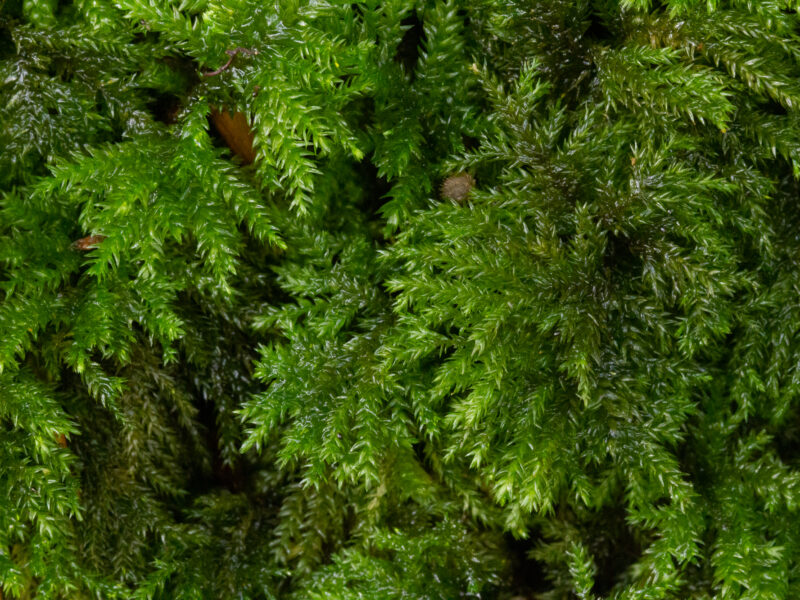Identification notes
Well-grown Thamnobryum alopecurum in lowland woodland habitat is easy to recognise from its dendroid growth form – no other woodland moss has a blackish ‘stalk’ devoid of true leaves below a bushy ‘canopy’ of secondary shoots. Like Eurhynchium striatum, this moss can detach itself from the ground and roll around like tumbleweed.
It is when it is growing in its alternative habitat on rocks in fast-flowing hill streams and rivers that it can become troublesome to identify. Riparian pleurocarps often adapt to periodic immersion and water shear by growing in atypical ways and T. alopecurum is no different. Its characteristic bare primary stem is much reduced and it is often smaller and more irregularly branched. Then it can be troublesome to separate from Isothecium species, including – in SW England, Wales and Scotland – I. holtii, which is very much a species of splashed or occasionally inundated boulders in rivers.
Although colour can be a helpful differentiator (T. alopecurum never has the bronze tinge of I. holtii), the best difference is easily seen with a x20 hand-lens in the field. Look at the tips of the younger leaves – if you have collected T. alopecurum you will see a small number of large teeth on the upper leaf margins. Isothecium species have denticulate leaves and the individual teeth are barely visible with a lens. Another useful difference is the mid-leaf cells – in Thamnobryum they are short (1-4 times as long as wide), papillose and thick-walled whereas the cells of Isothecium species are usually 4-8 times as long as wide. If you have a x20 hand-lens, the cells can even be seen in the field by holding the shoot up to good light.
Read the Field Guide account

















